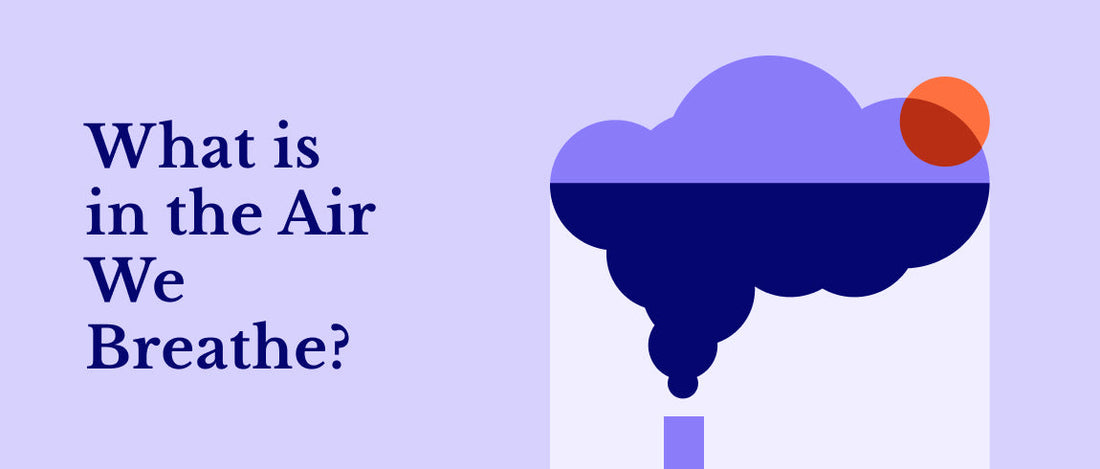We’ve all learned about air pollutants and how they can significantly impact our health, economy, and culture, but who really knows what each one means? With air being invisible, it’s tricky to tell different pollutants apart and understand how they interact. Luckily, we compiled this short guide that can help you see the unseen.
Viruses
Viruses are submicroscopic infectious agents that reproduce only inside the cells of living organisms. Their structure consists of one or a few genes enclosed in a protein shell surrounded by DNA or RNA. The organisms can infect all life forms, from animals and plants to bacteria and archaea.
They spread in humans in several ways, including airborne transmission, hand-to-mouth contact, or in food or water. SARS-CoV-2 (COVID-19) is probably the most famous virus to emerge in the last couple of years, but there are many other viruses that we know about and forget to regard them as such. This includes Influenza A (flu virus), Hepatitis B, Ebola, Cancer, and many more.
Bacteria
Bacteria are organisms often consisting of one biological cell and belong to a large domain of prokaryotic microorganisms. They were among the first life forms to appear on Earth and can be found in most of its habitats. Humans and most other animals carry millions of bacteria in their gut on their skin.
Most bacteria in and on your body are harmless and even positively impact the immune system. However, several species of bacteria can cause infectious diseases, including Cholera, Syphilis, Anthrax, Leprosy, Tuberculosis, Tetanus, and more. The most common fatal ones are respiratory infections, which can be treated with Antibiotics.

Mold
Mold is a fungus with over 100,000 species and grows in the form of multicellular filaments called hyphae. It usually has fuzzy features in green, gray, or black and reproduces by creating tiny spores that are invisible to the naked eye. It spreads by releasing reproductive spores, which can travel through the air, water, or on animals.
Although molds are not poisonous, certain mold species here are “toxigenic,” meaning they produce mycotoxins. Mycotoxins can cause a toxic response in humans and animals, even in small amounts. That’s why exposure to mold can trigger allergies or asthma attacks.
Dust & Dust Mites
Dust is made of fine particles of solid matter and when it is outside, it consists of particles that come from various sources such as soil lifted by the wind, volcanic eruptions, and pollution. Indoor dust is usually composed of dead skin cells, small amounts of plant pollen, human hairs, animal fur, textile fibers, paper fibers, minerals from outdoor soil, burnt meteorite particles, and more.
Dust mites are tiny eight-legged creatures that belong to the arachnids, a class that includes spiders, scorpions, ticks, and many more. They feed on dead skin from both humans and pets but they do not live on living people.
When dust is present indoors, it can have severe health effects, such as respiratory problems, asthma, allergic reactions, and lead poisoning (if the dust contains lead).
In the case of dust mites, the mites themselves contain protein molecules that trigger respiratory problems and they are considered a common source of potential allergic reactions in humans and pets.

VOCs
Volatile organic compounds (VOC) are organic chemicals that have a high vapour pressure at room temperature. VOCs are responsible for the odor of scents and perfumes as well as pollutants such as Benzene, Formaldehyde, Naphthalene, and more. They have a key role in communication between animals and plants, which includes attracting pollinators, protecting plants from predators, and interacting with each other.
Most VOCs are not acutely toxic but may have significant long-term chronic health effects. Among the most common health effects are irritation of the eyes, nose, and throat; headaches, poor coordination, and nausea as well as liver, kidney, and neurological damage. Some organics can even cause cancer in animals and are suspected or proven to cause cancer in humans.
Particulate Matters (PM 2.5 and PM 10)
Particulate Matters (PM) is a mixture of solid particles and liquid droplets that can be found in the air. It includes larger particles, such as dust, dirt, soot, or smoke, that are large or dark enough to be seen with the naked eye and smaller particles that can only be detected using an electron microscope.
PM includes PM 10 which is inhalable particles with diameters that are generally 10 micrometers and smaller and PM2.5, fine inhalable particles with diameters that are generally 2.5 micrometers and smaller. When particulate matter is inhaled, serious health issues can occur. Particle pollution exposure has been linked to a variety of health issues such as nonfatal heart attacks, aggravated asthma, decreased lung function, and premature death in people with heart or lung disease.

What can you do about it?
First of all, you can install an air management system to help clean your indoor air and monitor its quality in real-time. It's also important to maintain good ventilation and ensure a clean environment with routine maintenance. Also, you can learn more about air quality by visiting the World Health Organization, the Centers for Disease Control and Prevention, and the U.S. Environmental Protection Agency.



